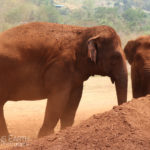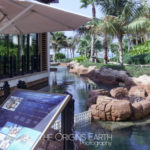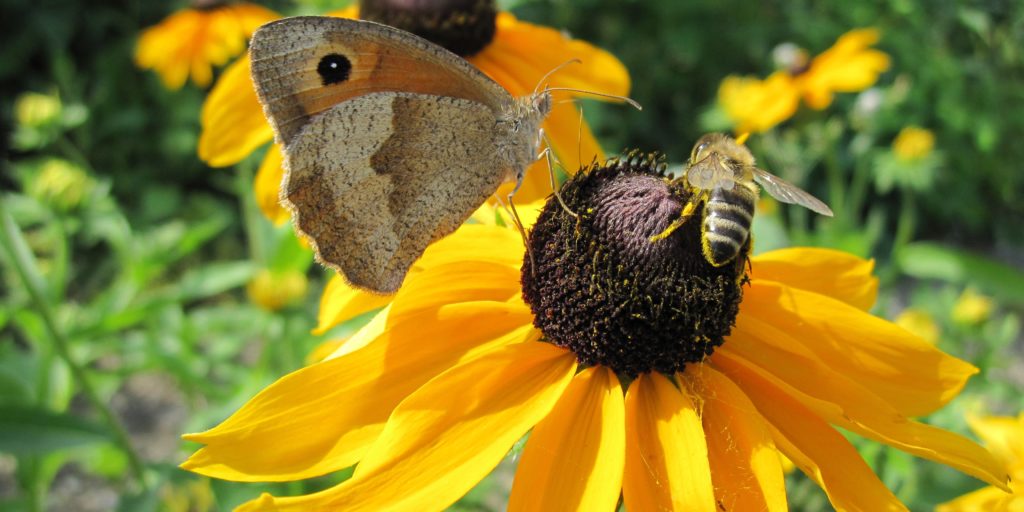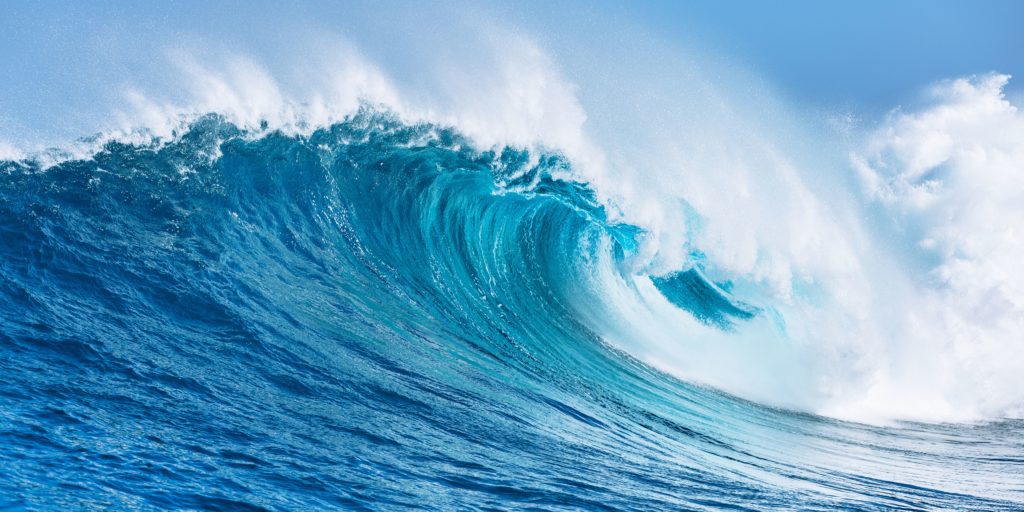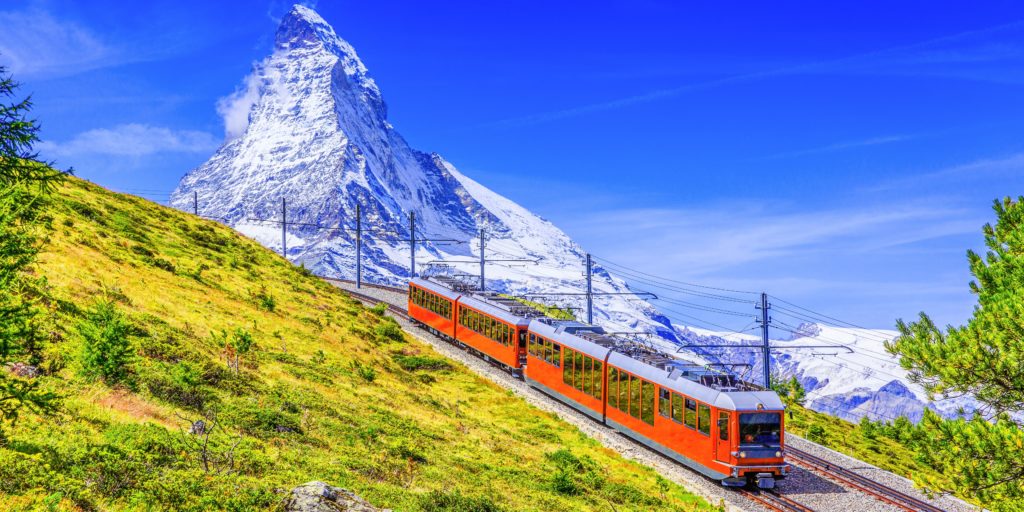Maya Bay in Thailand
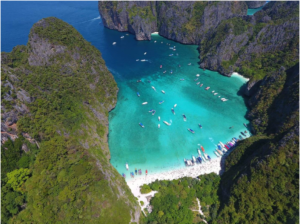
Ao Maya or Maya Bay was made famous by the movie The Beach starring Leonardo DiCaprio which was released in 2000. Maya Bay is located in the south of Thailand and is part of the archipelago of Koh Phi Phi, in the province of Krabi.
For 18 years, from the year 2000 until its closure in 2018, Maya Bay attracted nearly 3,000 tourists per day, tourists who were dropped off directly on the beach and came mainly to see Maya Bay with their own eyes and take amazing photos. However, during peak hours, visitors could barely stand on the beach because it was so crowded, making the experience disappointing and not allowing visitors to take idyllic photos of the paradise that is Maya Bay.
Unfortunately, the increase in the number of visitors over the years, and even before, has gradually destroyed the marine ecosystem, of which the corals are a large part and which have an important role. This was mainly due to the hundreds of boats that docked on the shore every day, scraping everything in their path with their anchors and stirring up sand on the corals with their propellers, which led to the disappearance of the ecosystem of Maya Bay.
The closure of Maya Bay and the coral rehabilitation program
In June 2018, seeing the extent of the destruction, the Department of Marine National Parks of Thailand announced the closure of Maya Bay for a period of 4 years to restore the ecosystem of Maya Bay.
The Ocean Quest association created and directed by Anuar Abdullah was in charge of the implementation of the coral rehabilitation program whose goal was to replant corals in the bay so that they could grow and live again.
The idea behind the coral propagation program is also to create a diversity of corals and not only to save coral species and the planning of the conservation work must follow the proper seasons, and in this case the Andaman Sea to be able to fully benefit from the implementation of the work at the right time.

The technique of coral propagation
A meticulous work
The goal of coral propagation is not only to save species but also to create diversity in their natural environment.
Collecting specimens and brood-stock is not as easy as it may seem. Indeed, corals cannot be handled without causing stress to them, which can have negative effects on them and thus hinder the success of the coral rehabilitation program. Indeed, moving corals from one place to another subjects the organism to pressure and temperature changes that cause stress that can lead to the death of the coral, so precautions must be taken to avoid stress during extraction, collection and handling.
Broken coral fragments are the main source of brood-stock corals among which there are different species that need to be collected for conservation and for the propagation program. They are taken from fragments found at the bottom of the sea and then these extracts are propagated in a protected nursery to be replanted later when the development is completed.
The pressure can cause the death of the coral
The first parameter that comes into play is the pressure, which is part of the stress that can cause the death of coral cuttings, so to prevent them from dying, an acclimatisation to the pressure must be done in addition to that for the temperature. Acclimatisation is a process whose goal is to slowly reduce the pressure during the ascent of the cuttings from the depths to protect them from decompression, that is why it is important that there is a regulated rhythm and stops. The ascent must be even slower than that allowed and carried out by the divers in normal circumstances, and during the ascent, the divers must make stops which are essential for reasons of temperature equalisation. However, it is important that the corals are returned to the sea quickly because the less stress they are under the better they survive, even though the process may take several hours.
Temperature can kill coral
A second parameter comes into play which is the water temperature. It is necessary to avoid too sudden changes that will have serious consequences on the coral brood-stock, so measures must be taken to protect the brood-stock from temperature stress, so the sea water that accompanies them must be put in transfer tanks. Corals can survive being handled out of water for long periods of time only if they are kept moist by receiving constant water.
The process consists of cutting and attaching coral fragments to a substrate for cultivation. There are different materials available but the most effective and suitable method for coral propagation is the “reef glue” method. This method has been adapted with Ocean Quest’s coral propagation technique which has added a special catalyst.
Once placed on a substrate, the corals will begin to calcify. It is important to be aware that substrates are carefully chosen for corals which are very selective, in nature, as to their substrate which is usually a rock.
In natural substrates, there are two that are compatible for propagation, they are calcite and aragonite, two minerals both coming from calcium carbonate. These two minerals come from ancient coral skeletons which allows the corals fixed on them to tolerate their substrate well.
A natural binder which is a coralline algae is used to prevent algae from populating the nursery beds where the substrates on which the coral cuttings are fixed are located. To do this, coralline is a calcareous alga that is chosen because it binds most substrates in the coral reef, and it is favorable to coral calcification. It is used for coral propagation to reduce brown and green algae infestations. It also binds nursery beds so that they can withstand the impact of waves.
Developing a nursery and transplanting
A nursery is important and necessary in a coral rehabilitation project because it provides a constant supply of brood-stock so that volunteers do not have to go out on the reef to extract corals. In addition, corals that are grown in a nursery are guaranteed to be healthy and can grow better because of the care and maintenance provided. And finally, it allows for a constant supply of strong coral genes for future transplantation. Only fragments are harvested from the parent colonies, which remain in the nursery.
Transplantation
Transplantation takes place when the coral brood-stock in the nursery have reached a size of at least 15 cm which takes 18 to 24 months. At this size the coral colonies are considered mature and ready to be transplanted. Then, the coral brood-stock are placed in the damaged areas of the coral reef without using any glue or catalyst but using the plugging method which consists in wedging them in the openings and crevices of the rocks which will allow them to calcify on the new substrate.
In a transplantation, the season and the time are the first elements to be taken into account because the coral needs time to recognise the substrate on which it is connected before calcification starts. This is why it is important to choose the right time of the year and it is always preferable to start in the dry season so that the spawner can calcify on the substrate.
Periodic monitoring and maintenance
Periodic monitoring and maintenance is required for corals that have been transplanted to damaged reefs. This monitoring should begin one week after transplantation to ensure that the transplanted corals have calcified and are stable. For this follow-up, a frequency of once a month and every quarter is required for corals that are stable. When the corals have calcified, it is necessary to map the area where they are to be replanted. Then, monitoring is required only once a year.
The future of Maya Bay
The coral rehabilitation program allowed a whole destroyed ecosystem to be reborn thanks to the transplantation of thousands of corals. This program lasted for 4 years, every day a dozen volunteer professional divers from dive centres in the Koh Phi Phi area helped Ocean Quest replant the corals. During the year of 2018-2019 alone, 40’000 corals were replanted by the association and about 20’000 to 25’000 corals by the national park that took over. When they arrived in 2018, Ocean Quest discovered a 100% dead coral reef, there were no corals left at all. While the marine species were no longer present, a year after the beach was closed, they counted 74 black-tip sharks as the primary residents, and in 2019, 104 black-tip sharks returned to the bay.
While the rehabilitation program was underway, the Thai authorities reviewed the facilities of Maya Bay by implementing a new tourism concept to allow visitors to have an extraordinary experience on this beach and for local tour operators to resume their activity but in a way that is more connected by the island’s environment.
Changes in Maya Bay
The opening of Maya Bay was done in the midst of a health crisis, which allowed people in Thailand to visit the beach without a big crowd. However, since the opening, a regulation of the number of visitors has been put in place. Knowing that before the closure nearly 3’000 tourists per day went to the beach, when reopening, they decided to drastically reduce this number to 300 tourists per day.
Before the visitors arrived directly on the beach, now they arrive by the back of the island and must take a path on a wooden platform built expressly making them pass through the vegetation of the island before reaching the beach.
On site, signs have been put up on conservation areas of Maya Bay making these areas closed to the public to allow the environment to regenerate. In addition, visitors must be informed about the management of their own waste in order to prevent pollution from being generated.
With this, entrance fees should normally be increased to compensate for the impact and stress factors that the environment is exposed to. The duration of the visit is now limited to 1 hour on site to ensure that the site is not overcrowded.
Anyway, the closure of Maya Bay has allowed the restoration of all the marine ecosystem that had been destroyed over the years and its reopening has allowed to rethink the tourist aspect by changing the duration of visit or the limited number of visitors.

An example to follow and propagate
It is certain that everything that has been done at Maya Bay has been done with the goal of allowing tourists to return and have a memorable experience on a beach that is much less crowded with a healthy land and marine environment that allows the fauna and flora to live in peace.
Through Ocean Quest’s rehabilitation program, it is clear that a message must be conveyed that is to save the environment.
Thanks to the closure of the beach, several thousand species of animals, notably black tip sharks, have returned and repopulated the area, allowing the coral to regenerate, an animal that is essential to the good balance and health of all the world’s marine ecosystems.
The work that has been done in Maya Bay in Thailand must serve as an example for other places in the world that must be, in turn, rehabilitated and protected. But it should also make people think about the preservation of the environment.
>> The Origins Earth thanks to Ocean Quest Global and Anuar for having given us photos and documentation <<


